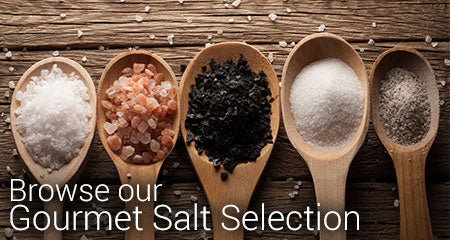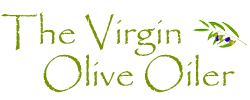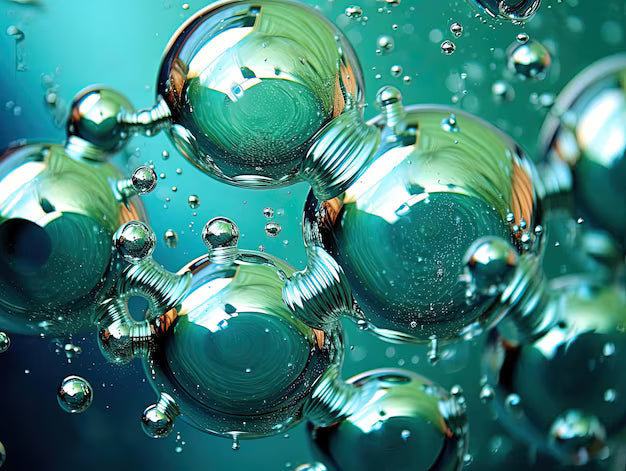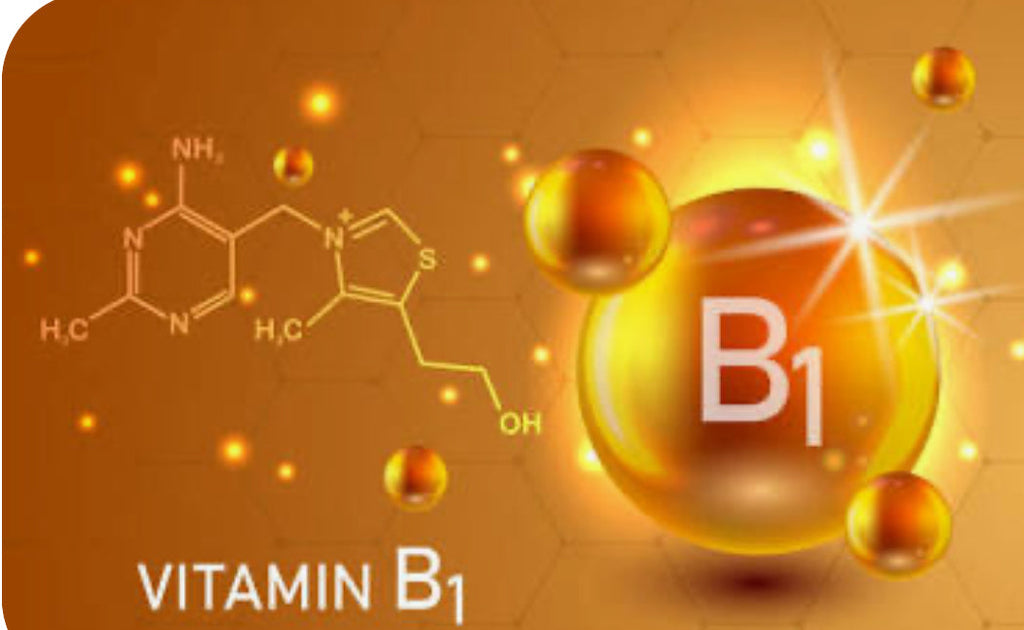Where Has All My Energy Gone & How Can I Get It Back? - Blog # 82

Hello Everyone! Welcome back to another Friday blog. Today I wanted to take a look at what we can do to improve our energy level by looking at it through a slightly different lens. Energy in our body is in the form of ATP (adenosine triphosphate) and is mostly made by our symbiotic friends, the mitochondria (ancient bacteria in our cells). However, most of us aren’t taking care of our mitochondria - we don’t feed them the polyphenols or consume enough B vitamins that they need - they get damaged, become senescent or just don’t function as well as they should. We put the wrong fuel in our proverbial tank, are nutrient-deficient, are exposed to a host of toxins from our food and environment, stay up too late, don't exercise, don’t sleep well and are stressed to the max. This drains our cellular batteries. Many things go wrong when ATP is running low. However, there are things we can do to help our mitochondria and support our energy production system for optimal performance, Let’s delve in.
We all know what it feels like to be tired or fatigued and have no “energy.” We feel rundown and sometimes even get sick. The stress from an argument with a family member, spouse or co-worker can leave you wiped out for the rest of the day, for example. When the requirements for energy outweigh the energy production, we are in deficit. When this energy-deficit becomes chronic, it often leads to painful and debilitating conditions we call Chronic Fatigue Syndrome and Fibromyalgia. Cellular function, DNA repair and replication, digestion, thinking and everything we do requires ATP. Certain jobs require more energy than others. Our brain, heart and muscle tissues are HUGE consumers of ATP. When there isn’t enough ATP to complete a job, guess what - that job doesn’t get done correctly or not at all. Ever experience brain fog? That is an ATP deficit. Enterocytes in our intestine require ATP to perform their job. When they become inflamed and stressed due to the food we are eating, ATP is depleted. When the tight-junctions in our intestine are depleted from ATP, they become weak and can’t close very well, resulting in leaky gut.
“Mitochondrial dysfunction is mainly characterized by a decrease in ATP production, which is a central event in the progression of pancreatic β cell dysfunction and diabetes.” Eating a high carbohydrate diet increases demand for ATP by the pancreatic β-cells. “More than 95% of ATP in the β-cell is produced by the mitochondria, and mitochondrially generated ATP is of primary importance for insulin release. Indeed, depletion of mitochondria from β-cells results in the complete loss of insulin secretion.” It is clear that loss of mitochondria in the pancreas results in death of the β-cells of the pancreas and an inability to produce insulin - this is insulin-dependent diabetes. Further, a “decrease in ATP production is always associated with an increase in production of reactive oxygen species, which exerts deleterious effects on pancreatic β cell survival and insulin secretion.” The more frequently we push that insulin button (high carb, frequent eating), the more ATP-depleted and damaged our pancreatic β cells become.
Our mitochondria produce our energy in the form of ATP through the processing of primarily glucose and fatty acids, but some protein as well. Amino acid, protein synthesis, protein folding all require energy. Optimally, we want our mitochondria to be able to switch back and forth - sort of like a hybrid car - between burning sugar (oxidative phosphorylation and glycolysis) and burning fat (fatty acid oxidation). This is metabolic flexibility. Did you know that your kidney’s preferred ATP source is from burning fat? “Mitochondrial fatty acid β-oxidation (FAO) serves as the preferred source of ATP in the kidney and its dysfunction results in ATP depletion and lipotoxicity to elicit tubular injury and inflammation and subsequent fibrosis progression.” Switching from burning carbs (more damaging) to burning fat takes stress off the kidneys and prevents glycation of the tiny blood vessels that destroy kidney function. Providing the right nutrients helps our mitochondria make that switch.
“Impaired mitochondrial function is implicated in the majority of today's most concerning chronic and degenerative health conditions including obesity, cardiovascular disease, cancer, diabetes, sarcopenia, and neurodegenerative diseases.” This is primarily due to the excessive mitochondrial production of reactive oxygen species (ROS) that is damaging both to our mitochondria and to us. “Oxidative phosphorylation yields 36 ATP per glucose, which is highly efficient compared to that of glycolysis generating only 2 ATP. The most efficient ATP-generating system in cell energy metabolism is FAO, which can generate 106–129 ATP, depending on the number of carbons in the FA chain.” That’s a significant difference in energy production - and explains why we can feel so energetic on ketones.
Taking care of our mitochondria is key to our energy production - and ultimately, how we feel. If we focus on what our mitochondria need to perform optimally, we will insure we function optimally. Our mitochondria die, we die. Game over. So, what damages them and what exactly do they need to perform optimally? First, they need to eat. They love fiber and ketones. Next, they require B vitamins, minerals, CoQ10 and enzymes to make ATP. Let’s take a look at the pathways used by our mitochondria so you can see just how important the B vitamins are.

If we are deficient in our B vitamins, you can see how ATP production could get disrupted and we end up in a deficit. Deficiencies in minerals such as - magnesium has >800 jobs - one being required to activate ATP - and zinc a cofactor for >300 enzymes. Many things we do deplete these vitamins and minerals, causing us to require more to heal, repair and make things happen. So, what depletes these important nutrients?
- Stress - when we are stressed, we release cortisol. This literally triggers the production of glucose (gluconeogenesis) from other fuel sources - protein and fat and mobilizes stored glycogen to be converted to glucose for immediate energy - so we can run away from danger. This dumps a lot of glucose into our bloodstream and stimulates the release of insulin from the pancreas to drop the blood sugar. We are in fight or flight mode - digestion and the immune system shut down. When we are in a state of chronic stress, we are crashing and burning over and over. Oxidation and excessive ROS are produced, damaging our mitochondria and our tissues. Over time, we can lose muscle tissue (sarcopenia), causing debility and frailty.
- Alcohol - depletes B vitamins, vitamin C and zinc - disrupting ATP production. Alcohol causes a depletion of oxygen in the liver creating a state of hypoxia and interferes with ATP production. Further, “alcohol causes changes to the walls of the intestine, which allows a harmful bacterial product called endotoxin to pass into the blood more readily. As a result, endotoxin levels in the blood and tissues rise. The body responds to this increase in endotoxin by launching a coordinated immune response. For example, high endotoxin levels in the liver cause immune cells residing in the liver (Kupffer cells) to release signaling molecules (i.e., cytokines) as well as other compounds (e.g., prostaglandins) that result in a stepped–up inflammatory response.
- Highly processed foods - Fructose is nearly always in these ‘food-like substances’ made in a laboratory - science project - in the form of high fructose corn syrup. It’s also in high levels in fruit juices, beer, sugar and high-sugar fruits: fructose is uniquely damaging to the liver - it is the only ‘nutrient’ that uses ATP in its metabolism - literally depleting energy from the system - leading to low levels of ATP. It causes massive inflammation and is 7X worse than glucose creating 100x more ROS (reactive oxygen species). Further, it interferes with 3 mitochondrial enzymes - essentially poisoning them. This causes cellular dysfunction and fatigue. Fructose, like alcohol, depletes oxygen, triggers gluconeogenesis (production of glucose) and synthesis of triglycerides, depletes B vitamins, vitamin C and minerals. Most of the dietary fructose is converted to glucose, triglycerides and uric acid. Fructose > 11g/day activates the conversion of fructose to uric acid. “The unique metabolic properties of fructose potentiate profound metabolic consequences like hypercholesterolemia, hypertriglyceridemia, and hyperuricemia.” When triglycerides are elevated, they damage the pancreas. They destroy the pancreatic β-cells - disrupting your ability to produce insulin and digestive enzymes. When uric acid is elevated, it increases inflammation and directly damages the microbiome as well as the lining of blood vessels inhibiting NO (nitric oxide) production - resulting in high blood pressure and increases risk of Alzheimer’s and chronic kidney disease. For every 1mg/dL increase in uric acid above 7 there is an increased risk of all-cause mortality of 8-13%.
- Sugar/high carbohydrates - found in breads, cereals, pastas - these turn into glucose - increasing blood glucose levels and stimulating an insulin response - unlike fructose (which goes to the liver for processing). But glucose like fructose depletes B vitamins, vitamin C and minerals. Glucose and vitamin C have a similar chemical structure and compete for glucose transporters. “Glucose not only inhibits the transport of vitamin C into cells, including phagocytic leukocytes, but it also inhibits the stimulation of other processes that are important for the immune system. This competition may explain why large doses of ascorbic acid are necessary to overcome inhibition by glucose.” Metabolism drives ROS and inflammation. In a state of low oxygen, ATP production switches from oxidation to fermentation. ATP will be low and yield only 2 ATP for every 1 glucose molecule vs 36 ATP with oxygen. No wonder we are tired.
- Lack of Sleep - It is increasingly more evident that sleep plays a very important role in ATP production. ATP production is very high in the early stages of sleep and is thought to provide the energy for the anabolic (building) of amino acids and fatty acids involved in repair and neuroplasticity. “In deep sleep, blood flow is directed less toward your brain, which cools measurably. At the beginning of this stage, the pituitary gland releases a pulse of growth hormone that stimulates tissue growth and muscle repair. Researchers have also detected increased blood levels of substances that activate your immune system, raising the possibility that deep sleep helps prepare the body to defend itself against infection.”
- EMF - electromagnetic field from cell phones, laptops and other devices have detrimental effects on multiple cellular functions, including interfering with mitochondrial production of ATP, increase in ROS, interferes with both male and female reproduction with increased ROS and decreased ROS-scavenging ability.
- Medications - multiple medications interfere with ATP production. For example, Metformin interferes with zinc and aspirin blocks zinc transporters. Check out blog # 80!
- Glyphosate - an ANTIBIOTIC, as well as herbicide - and other chemicals sprayed on our food and in our environment chelate (bind) minerals from the soil and deplete the nutrient source from our plants - these toxins interfere with our metabolism and POISON our mitochondria. Check out blogs 70 and 71!
Okay, so we know we need to avoid the things that deplete our nutrients and interfere with energy production. Let’s look at what we can do to enhance mitochondrial function and restore our energy.
- Hormesis - this is a temporary stress on the body that results in restorative effects. An example is a hot bath that stimulates heat-shock proteins, removal and/or re-folding of mis-folded proteins. Another is a cold plunge to stimulate mitochondrial uncoupling and proliferation as well as triggering antioxidant and healing pathways.
- Increase Brown Fat - color is due to high numbers of mitochondria. You can convert white adipose tissue to brown through cold exposure, EVOO, and exercise. This allows your mitochondria to be very efficient using up to ~30% of ingested calories to be “thrown out” in the form of heat, rather than burned as fuel for ATP.
- Exercise - increases blood flow and oxygenation of tissue - resulting in increased production of ATP. Exercise can also be hormetic - micro-tearing of muscle to enhance muscle-building. Doing short bursts, as in HIIT training, is mitohormetic - your mitochondria upgrade in numbers and function as a result, in response to the demand.
- Fiber - increasing intake of both digestible and indigestible fiber feeds your microbiome and mitochondria the substrate they need for metabolism and to make metabolites that promote health. Our microbiome consume the fiber and produce SCFAs (short-chain fatty acids) like butyrate that feed our enterocytes (intestinal cells) and mitochondria.
- Lose Belly Fat - this is white visceral adipose tissue that behaves like an organ, excreting hormones and inflammatory molecules that screw up our hormone balance and drive metabolic dysfunction. Intermittent fasting and time-restricted eating are great tools to achieve this.
- H2O - drinking enough water helps provide oxygen for ATP synthesis and multiple other reactions in the body. Even mild dehydration drives the conversion of glucose to fructose. Drink roughly your body weight in ounces/day. Dehydration is a severe problem.
- Minerals - sodium, iron, magnesium, zinc and potassium are crucial for reactions in the body. Most people are deficient due to poor diet and glyphosate chelating our minerals from the soil.
- B-Vitamins - these are depleted by our lifestyle. Most grains are “fortified” with synthetic B vitamins due to being stripped of nutrients in processing. Unfortified nutritional yeast is the best source of natural B vitamins. A healthy microbiome produces some B vitamins - they need B vitamins like we do, so fix your gut.
- Vitamin D3 - Supplementation with vitamin D3 is crucial for most of us. EVOO works synergistically with vitamin D3 to enhance multiple systems in the body - enhancing immune system function and bone-density, for example. With the cold and flu season approaching - likely along with some new Covid-19 variant - increasing vitamin D3 levels right now is one of the most strategic moves we can make to boost immune system function and protect against whatever comes our way. Ask your MD to add it to your bloodwork - or go get it tested yourself. You want your vitamin D3 levels to be >50mg/L. This is the level at which one can achieve a near-zero risk of death from Covid-19, according to a Meta-Analysis in 2021.
- Sunshine - Exposure to bright light in the am helps set circadian rhythm and helps us with melatonin production, which is one of the two antioxidants required to protect our mitochondria. Check out blog # 76!
- Stress Management - breathwork, meditation and other practices go a long way in reducing cortisol and its negative impact when chronically elevated.
- Increase Healthy Fats - MCT (medium chain triglycerides) are found in coconut oil and in goat and sheep’s cheese. These fats are readily absorbed for immediate energy. As we now know, metabolism of fats through FAO pathway produces the most ATPs. MCT oil, HP-EVOO, avocado oil, grass-fed butter and Ghee.
- HP-EVOO - (high polyphenol extra virgin olive oil) polyphenols in EVOO provide food for our microbiome and are powerful signaling molecules for our mitochondria - signaling them to uncouple and divide enhancing mitochondrial power end overall available energy. Further, the antioxidant and anti-inflammatory properties attenuate oxidative damage. Increasing intake of healthy fats promotes ketone production and enhances health of your microbiome, mitochondria, brain, arteries and promotes ATP production through the FAO (fatty acid oxidation) pathway - resulting in the most ATP production and energy for us. Consume ~ 1L/week per person like the Italians and Greeks do to halt inflammatory disease processes and enhance health and longevity.
So, until next time my friends…Drink, Drizzle, Digest HP-EVOO at least 4T raw daily, - use more for cooking and drizzling onto your food - eat the rainbow of organic or wild-sourced or organic veggies (7-9 C) and low-glycemic fruits (to get the rainbow of gut microbes!) - eat wild-caught, pasture-raised, grass-fed - get plenty of sunshine - supplement magnesium, zinc, vitamin D3 + K2 - get your trace minerals and electrolytes with good sea salt - Celtic is hand-harvested and Himalayan was formed before plastics - eat foods high in lutein - drink your body weight in oz of water - get a good pre/probiotic - consume digestible and indigestible fiber for your gut microbes - adaptogens (such as mushrooms) and methylation donors (kale, beets, spinach, cruciferous, lion’s mane…), marjoram, rosemary, oregano, parsley and other herbs to detox, enhance overall health and reverse aging and disease - exercise your body and mind - add a few minutes of mindful meditation and breathing exercises to your day to combat stress - take a hot Epsom salt bath and follow with a cold shower/ice plunge - practice “earthing” as an anti-inflammatory - remove EMF (electromagnetic frequency) devices and blue light - use IR (infrared) from incandescent lighting, non-toxic candle or light a fire to enhance sleep and...turn off the light!! #HP-EVOO
This blog is intended for informational purposes only. Discuss strategies with your Healthcare Practitioner.






